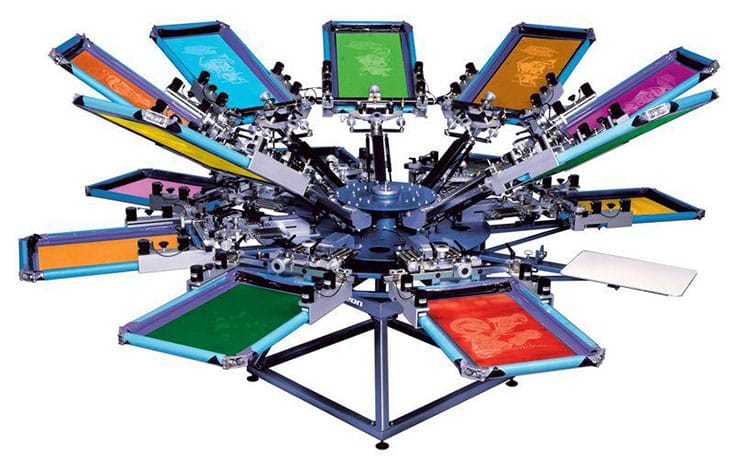Ultimate Screen Printing Fundamentals Explained
Basically, digital hybrid screen printing is an automatic screen-printing press with a CMYK digital improvement situated on one of the screen print stations. Digital hybrid screen printing is capable of variable data alternatives, producing endless modifications, with the added ability of screen print specific strategies. Screen printers use a silkscreen, a squeegee, and hinge clamps to evaluate print their designs.
Ink. B. Squeegee. C. Image. D. Photo-emulsion. E. Screen. F. Printed image. How to evaluate print one image How to screen print with multiple layers using CMYK Various samples of the printed image Used to hold screens in location on this screen print hand bench Trolley containing a wooden squeegee and acrylic ink A wash out for cleaning screens Screen printing 4 layers on a hand bench A screen is made from a piece of mesh extended over a frame.
For the mesh to be effective, it must be installed on a frame and it need to be under tension. The frame which holds the mesh could be made of diverse products, such as wood or aluminum, depending upon the sophistication of the machine or custom embroidery Jacksonville, FL the craftsmen procedure. The tension of the mesh may be checked by utilizing a tensiometer; a typical system for the measurement of the tension of the mesh is Newton per centimeter (N/cm).
Fx Screen Printing & Embroidery: Home - Johnstown Fundamentals Explained
 screen printing Jacksonville FL
screen printing Jacksonville FL
 custom embroidery Jacksonville, FL
custom embroidery Jacksonville, FL
Before printing occurs, the frame and screen must go through the pre-press procedure, in which an emulsion is 'scooped' across the mesh. Once this emulsion has dried, it is selectively exposed to ultra-violet light, through a movie printed with the required design. This solidifies the emulsion in the exposed areas but leaves the unexposed parts soft.
It is a positive process. In fabric printing, the surface area supporting the fabric to be printed (typically referred to as a pallet) is covered with a wide 'pallet tape'. This serves to safeguard the 'pallet' from any undesirable ink leaking through the screen and possibly staining the 'pallet' or moving unwanted ink onto the next substrate.
 screen printing Jacksonville FL
screen printing Jacksonville FL
The kind of tape utilized in for this function frequently relies on the ink that is to be printed onto the substrate. More aggressive tapes are generally utilized for UV and water-based inks due to the inks' lower viscosities and higher tendency to sneak below tape. The last process in the 'pre-press' is shutting out any unwanted 'pin-holes' in the emulsion.
The Ultimate Guide To Live Screen Printing — Soul & Ink
To shut out these holes, materials such as tapes, speciality emulsions and 'block-out pens' may be used effectively. The screen is put atop a substrate. Ink is put on top of the screen, and a floodbar is utilized to push the ink through the holes in the mesh. The operator begins with the fill bar at the rear of the screen and behind a reservoir of ink.
This efficiently fills the mesh openings with ink and moves the ink tank to the front of the screen. The operator then utilizes a squeegee (rubber blade) to move the mesh down to the substrate and pushes the squeegee to the rear of the screen. The ink that remains in the mesh opening is pumped or squeezed by capillary action to the substrate in a controlled and proposed amount, i.
the damp ink deposit is proportional to the thickness of the mesh and or stencil. As the squeegee relocations towards the back of the screen the tension of the mesh pulls the mesh up away from the substrate (called snap-off) leaving the ink upon the substrate surface area. There are 3 common types of screen printing presses: flat-bed, cylinder, and rotary.